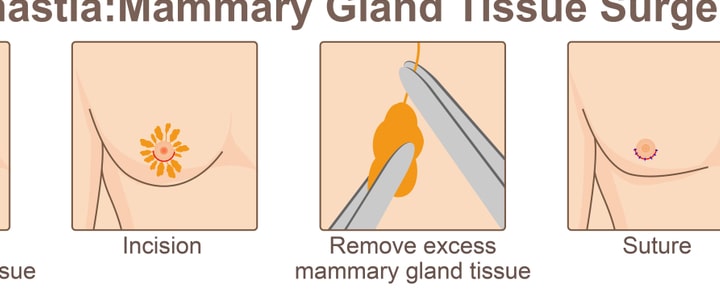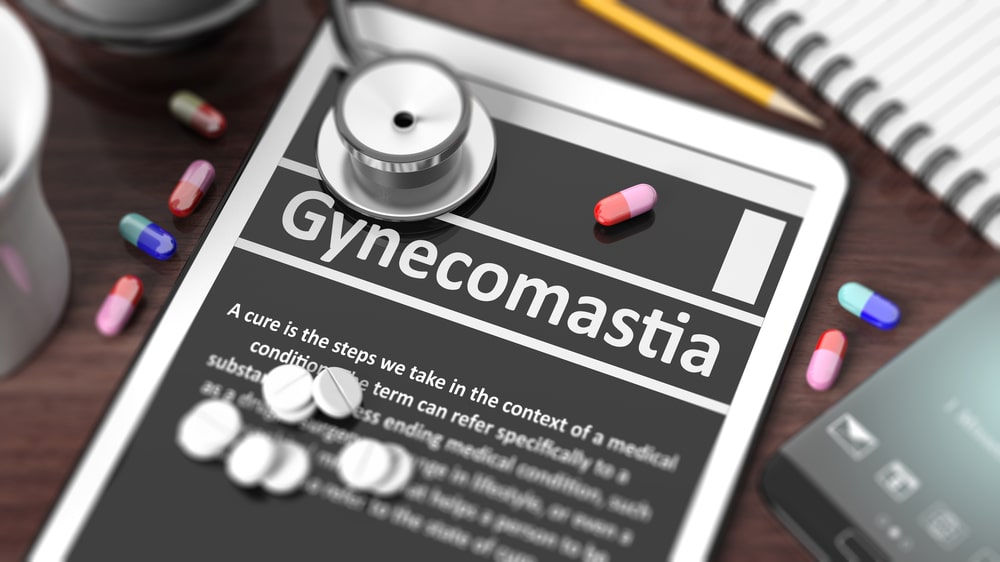Gynecomastia Surgery
At Skinalaya Clinic, we can provide you with the best gynecomastia surgery in Delhi with minimal complications and successful results. Check out below everything you need to know about gynecomastia and gynecomastia surgery.
Gynecomastia Surgery
Gynecomastia is a disorder of enlarged or overdeveloped breasts in men which can happen at any age. It can be the result of the use of specific drugs, obesity, heredity or hormonal changes. Gynecomastia can diminish men’s self-confidence and cause emotional discomfort.
Gynecomastia surgery decreases men’s breast size and flattens and improves their chest contours. If in severe cases, the weight of the excess breast tissue causes breast sagging and areolar stretching, the size and position of the areola can be surgically promoted and excess skin can be reduced.
Plastic surgery for correcting gynecomastia is known as reduction mammaplasty.
Symptoms
Symptoms and signs of gynecomastia are:
- Swollen breast tissue
- Breast tenderness
- Excess glandular tissue development
- Presence bilaterally (both breasts) or unilaterally (one breast)
Causes
Natural Hormonal Changes
-
Gynecomastia in infants
Many male infants are born with enlarged breasts because of the effects of their mother’s oestrogen. The swollen breast tissue usually goes away within 2-3 weeks after birth.
-
Gynecomastia during puberty
Gynecomastia due to hormonal changes in puberty is comparatively common. The swollen breast tissue generally goes away within 6 months to 2 years without treatment.
-
Gynecomastia in adults
Gynecomastia peaks between 50-69 years of age. In this age group, at least 1 out of 4 men gets impacted.
Medications
- Anti-androgens used for treating prostate cancer, enlarged prostate, etc. These include spironolactone (Carospir, Aldactone), finasteride (Propecia, Proscar) and flutamide.
- Anabolic androgens and steroids recommended by doctors for particular problems or sometimes used illegally by athletes for enhancing performance by building muscle.
- AIDS medications, Gynecomastia can occur in HIV-positive men who are getting a highly active antiretroviral therapy. Among various HIV drugs, Efavirenz (Sustiva) is more often related to gynecomastia.
- Anti-anxiety medications like diazepam (Valium)
- Tricyclic antidepressants
- Antibiotics
- Ulcer drugs like Tagamet HB (the over-the-counter medication cimetidine)
- Cancer treatment
- Heart medicines like calcium chain blockers and digoxin (Lanoxin)
- Stomach-emptying drugs like metoclopramide (Reglan)
Alcohol and street drugs
- Alcohol
- Amphetamines, used in attention-hyperactivity/deficit disorder treatment
- Marijuana
- Heroin
- Methadone (Dolophine, Methadose)
Health conditions
-
Hypogonadism
It interferes with normal testosterone production like pituitary insufficiency or Klinefelter syndrome. It’s associated with gynecomastia.
-
Ageing
Hormonal changes happening with natural ageing may cause gynecomastia, particularly in overweight men.
-
Tumours
Tumours involving the pituitary gland, adrenal glands or testes can produce hormones which change the male-female hormonal balance.
-
Hyperthyroidism
Here the thyroid gland overproduces thyroxine (hormone).
-
Kidney failure
About half the patients under dialysis receive gynecomastia because of hormonal changes.
-
Liver failure and cirrhosis
Hormonal changes associated with liver disorders and cirrhosis drugs are related to gynecomastia.
-
Malnutrition and starvation
When the body lacks enough nutrition, oestrogen levels stay the same while testosterone levels fall, causing hormonal imbalances. Gynecomastia may also occur when normal nutrition resumes.

Treatment
Medications
Gynecomastia, mainly in pubertal males, often disappears on its own within about 6 months. Hence, observation is preferred over certain treatment in many cases.
Medical treatments are available for treating gynecomastia but results on their effectiveness are limited. No medications have been approved by the FDA for gynecomastia treatment. However, the following medications have been used for treating the condition:
- Testosterone replacement has been helpful in older men having low testosterone levels but it doesn’t work for men with normal levels of this male hormone.
- Clomiphene can be used for gynecomastia treatment. This drug can be taken for up to 6 months.
- The SERM (selective oestrogen receptor modulator) known as tamoxifen (Nolvadex) has been seen to decrease breast volume in gynecomastia. However, it can’t remove the entire breast tissue. This kind of therapy is often used for painful or severe gynecomastia.
- Danazol refers to a synthetic derivative of testosterone which reduces oestrogen synthesis by the testes. It acts by inhibiting the pituitary secretion of FSH (follicle-stimulating hormone) and LH (luteinizing hormone) which direct the sex organs for producing hormones. It is less often used in gynecomastia treatment than other drugs.
Surgery
Medications are usually more beneficial in decreasing gynecomastia in the initial stages as scarring commonly happens after about 1 year. After scarring, medications are unlikely to be effective. Then surgery is the only possible option.
If enlarged breasts are troublesome and significant even following initial observation or medical treatment, the doctor may recommend surgery.
Two Gynecomastia Surgery options include:
-
Liposuction
It eliminates breast fat rather than the breast gland tissue itself.
-
Mastectomy
It removes the breast gland tissue. It is often performed using small incisions only. This less invasive option of surgery involves less recovery time.


